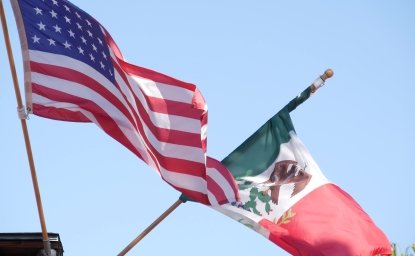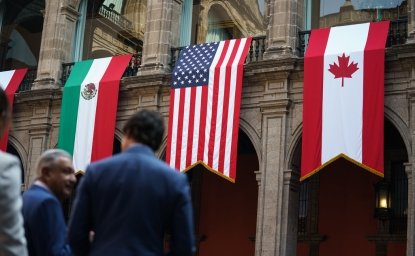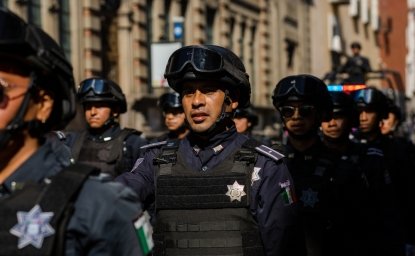Increased security has caused a "thickening" of the border, handicapping businesses and tourists with long delays, said Christopher Wilson of the Woodrow Wilson International Center for Scholars.
"Border friction costs us," Wilson said. "We don't have to give up security to get efficiency, or efficiency to get security."
He was one of a group of panelists from the government, academic and private sectors who met Friday at the U.S. Chamber of Commerce in advance of a series of visits to key border sites next week.
The five days of visits, beginning Monday, will include meetings with public officials and businesses on both sides of the border, to get a close-up look at how trade actually happens each day along the 2,000-mile Southwest boundary.
"The Mexico border region is one of the wealthiest areas on the planet, maybe the fourth-largest economy in the world," said Erik Lee, associate director of the North American Center for Transborder Studies at Arizona State University.
But Lee and Wilson, who co-authored a report on transborder economics that was released last week, said there are numerous obstacles to developing that economy.
On top of stepped-up security efforts, Wilson said, deteriorating roads, bridges and ports of entry have added hours to the time it takes businesses and tourists to cross. Those delays have caused some business to move operations to Asia, according to their report.
"We are way behind in constructing infrastructure to facilitate trade along the U.S.-Mexico border," said Lee, adding that there is as much as $6 billion in backlogged maintenance to that infrastructure.
He said U.S. manufacturing, tourism and retail businesses would feel a significant boost if the infrastructure were brought up to par.
Wilson also said there is a greater need for "security intelligence" and a voluntary trusted-traveler program for frequent border crossers. He pointed out that 85 percent of Mexican tourists come through land ports of entry.
"A border trusted-traveler program can shrink the haystack that border agents have to sift through, with intelligence offered voluntarily," Wilson said.
Since the implementation in 1994 of the North American Free Trade Agreement, bilateral trade has grown to a half-trillion dollars per year, and created 6 million U.S. jobs in states as far as away as New Hampshire, according to their report.
Wilson said that Mexico and the U.S. do not just trade goods, "we build products together." A Ford car, for example, crosses the border seven times during manufacture before it is finished, Wilson said.
"We gain and lose competitiveness together [and] we need a border that functions well ... the way that economy is now structured," he said.
Lee said another reason to focus on improving cross-border trade efficiencies is Mexico's currently strong economy. It grew at 4 percent last quarter alone, he said.
"Mexico's economy for the foreseeable future will most likely be growing faster than the U.S. economy," Lee said.
He said Texas dominates U.S.-Mexico trade, and two of the seven border sites the group plans to visit next week will be in Texas.
"For 2011, Texas had $179 billion of two-way trade with Mexico, which is a record," Lee said.
Friday's panel said the problems need a fresh approach. The hope is that the border visits will help find new solutions.
"Trade is very detail oriented," Lee said. "I'm hoping to learn more about El Paso's challenges and a little bit more about the Texas genius for cross-border trade with Mexico."
Read More: http://ktar.com/22/1550916/Panel-USMexico-border-issues-hinder-economic-opportunities





